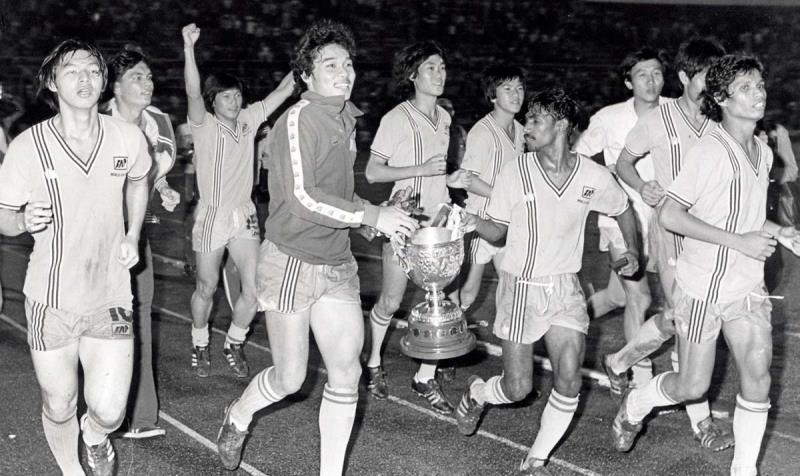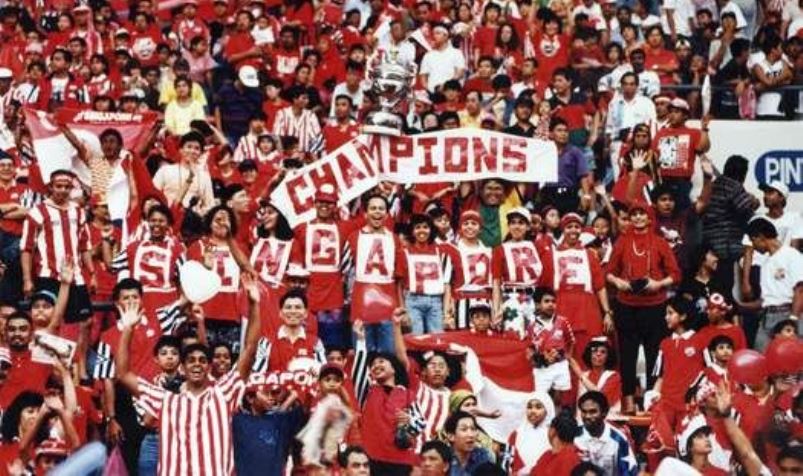
THE rather antiquated kampong drums have been beaten umpteen times calling out for Singapore to return to the Malaysia Cup to salvage some football pride, perhaps on either sides of the Causeway.
I’ve heard it to the point of breaking my ear-drums to go back to the “kampong days” where the stadiums were crackling to capacity and the divine “Kallang Roar” rocking the terraces of the good ‘ole National Stadium.
To put it bluntly, I’ll say it will be a backward step to the Stone Ages if we believe a revival of football standards will rise merely because we walk back to the Causeway.
The latest call came from veteran football pundit, George Pasqual, a former FAS (Football Asociation of Singapore) council member of ex-President of Tampines Rovers, one of the oldest clubs. He wrote in the Straits Times Forum Page that it may well be a “win-win situation for both Malaysia and Singapore”.
I beg to differ, Mr Pasqual.
On the 40th anniversary of “Uncle” Choo Seng Quee’s Lions winning the Malaysia Cup in 1978, let me reiterate that we should bury the ghosts of the past and pragmatically move forward, with a more scientific and pragmatic formula, for the sake of the younger generation and for God’s (oops, “bola”) sake!
The outmoded merry times of the 1970s and 80s (Jita Singh’s team won it in 1980) must be forgotten and even the “Double” winners in the 1990s did it with a star-spangled team of foreign-based players of Australian and South Korean nationalities.
Let it go on record that only (the late) “Uncle” Choo (he died 35 years ago) and Jita, the first Sikh to wear the Lions jersey and the youngest coach at 31 to win the Cup, displayed pride with an all-Singaporean team which evoked plenty of patriotism and national sentiments.
PASSIONATE RIVALRY
Mr Pasqual, arguably one of the best FAS council members the past half-century, says: “Bring back the Malaysia Cup and football’s glory days, with its passionate rivalry and stirring plays that captivated fans in both countries, will return.”
I say, rather crudely, let’s not return to the old vomit.
Sports-wise, politically, economically, lifestyle-wise, there have been enormous face-lifts on either sides of the Causeway. Rather pathetically, in football-terms, both Singapore (FIFA ranked 169) and Malaysia (FIFA 171) are at the worst international ratings and sparring against each other, in an old-fashioned Malaysia Cup will only bring us back to the “balek kampong days”.
The Lions and Tigers (Malaysia’s nickname) must pragmatically move forward, seriously dig in their spades to the ground and revive youth development in order to find the proverbial pot of gold at the end of the football-rainbow.
In my opinion, Malaysia is definitely headed the right way with the Tigers winning the Asean Under 19 Tournament in Jakarta last week and even qualifying for last year’s Asian Under 23 Finals in China. The Lions, however, have their pride between the tails with absolutely no results at any regional level competition from Under 14 upwards to the senior team.
Irwan Jamil, a die-hard fan, also wrote to The Straits Times that the setting up of a professional league in 1996 after the Malaysia Cup pull-out and even the World Cup 2010 dream of the FAS, have proved to be a flop.
He says: “But truth be told, since the inception of the S-League in 1996, interest in local clubs, not to mention dismal attendances at matches, leave much to be desired. Hence, we should acknowledge that the way forward to address the declining support for Singapore football is to play to our strengths – with the Malaysia Cup.”
In my opinion, gone are the days when Singapore’s presence in the competition evoked a burning desire among Malaysian states to beat its neighbour that it spurred and energised all teams to work hard and produce capable teams for the encounters. These games, as Mr Pasqual argues, “generate business for the transport, food and beverage and hotel sectors as well as create some some jobs to support the large audience numbers at these stadiums”.
But K. Kandasamy, a retired police officer and assistant Malaysia Cup manager in the 1990s, feels it’s not wishful thinking to revive the Malaysia-Singapore rivalry with the younger generation.
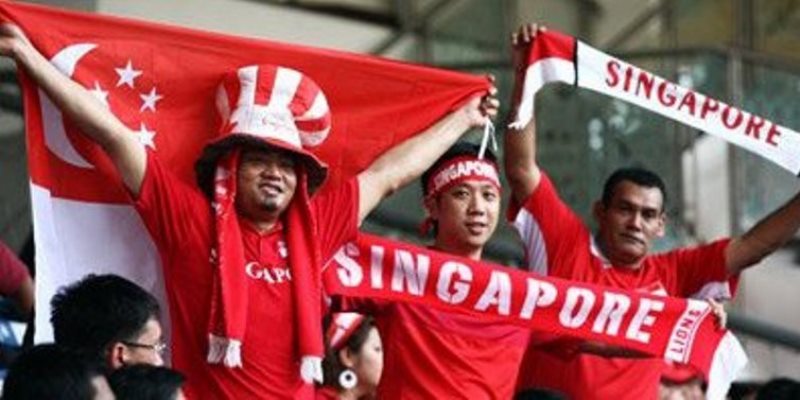
NEW MALAYSIA-SINGAPORE RIVALRY?
He says: “Let’s put aside past memories and try and rebuild the magic of the Malaysia Cup Remember, we produced outstanding Singapore stars like the Quah brothers, Majid Ariff, Rahim Omar, Roy Krishnan, S Rajagopal, Sundramoorthy and Fandi Ahmad through the Malaysia Cup bandwagon.
“I’m nostalgic, some may say I’m silly, but I sincerely believe we can nurture a new generation of younger players and even bring back the crowds at either Jalan Besar Stadium or even the SportsHub.”
Schoolteacher Raymond Leong of Choa Chu Kang believes infusing the S-League clubs into the Malaysia Cup, with a stricter cap on quality foreign players, may be an alternative instead of fielding a Lions XII team.
He says: “This could dispel the Malaysians’ fear that our over-funded national team will overwhelm their state teams and “malu” them again. I think the Malaysian teams and fans will welcome the competition. I’m sure sponsors on both sides will definitely support it.”
Looking back, as a journalist who covered the Malaysia Cup in the 1970s through to the 90s, I believe the spiritual “Kallang Roar” is more effective at fostering national pride than catchy National Day songs!
I vividly remember the chanting was cacophony of different cheers – as we did not have any songs or slogans as we see in the Premier League – but we had the claps, the trumpeting and drums, and, of course, the occasional “referee kayu” to shout in unison. I just wish that “Roar” would be just as loud these days.
It would add that it is more effective than winning Olympic table tennis medals with the help of “foreign talent”. It also fosters racial harmony, because football is a cult-sport that cuts across all races and the only sport that can, hopefully, fill the new-look SportsHub one day, if only the new-look FAS, under lawyer Lim Kia Tong, gets their acts together.
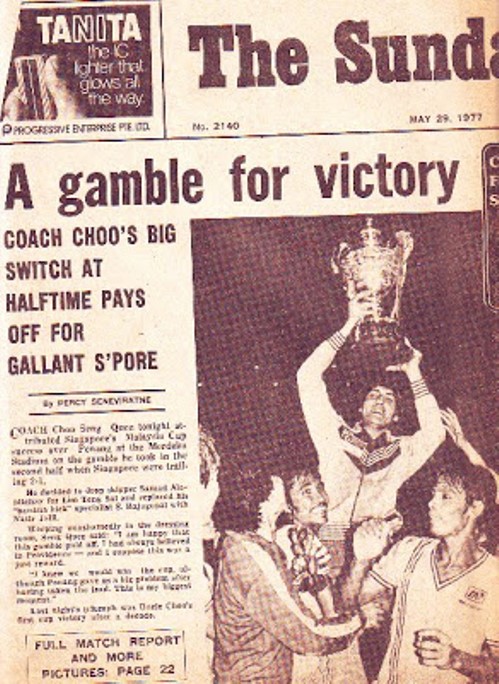
POOR REGIONAL STANDARDS
Without sounding political, says Shenton Way-based architect Richard Pereira, with the new Pakatan government over the Causeway, “what better way to build up relations with our neighbours up north than through football?”. He says: “With a season-full of matches, Singaporean fans will have an excuse to visit Malaysian states they never typically go to. I’m sure this will dispel lots of misconceptions they had about Malaysia.”
The sad predicament now is that, the past decade, the regional standards of the Lions (and the Tigers) has not risen much. Hard truth be told, it has sunk to the worst FIFA rankings this century. And more pathetically, the country’s reputation for match-fixing is becoming the stuff of global legends!
Even having a delusional politician insist that Singapore would make it to the 2010 World Cup Finals provided a few good laughs over drinks. But it also showed just how little is known about the real game at play on the ground, and more significantly, how the Lions’ FIFA ranking dropped from 73 in 1993 to 169 today. (Mind you, same sorry tale with Malaysia: 75 in 1993 and 171 today).
NO POLITICS AT PLAY
Jita Singh, the award-winning SNOC ‘Coach of the Year’ 1981, prefers not to look back at the Malaya or Malaysia Cup to improve present-day football. He says: “It was good for that generation half-century ago because there were not much competitive elements then. We must be realistic now and develop the younger generation to meet higher regional standards in the many Asean and Asian levels, not go back to the ‘kampong days’ of Malaysia Cup.”
He rightly noted that the “bench-mark must be significantly pushed up, using modern-day coaching methods and investing a lot more on the younger generation”. He adds: “The recent World Cup has shown that smaller countries can also excel on the international stage. It’s not always the population-strength but the hearts and minds of the people running the football show.”
Looking at Singapore’s football ecosystem, the recent separation of football and politics is a good thing with lawyer Lim Kia Tong taking over the helm. The ruling has forced the FAS to shake up its structure and perhaps kick some sense and joy back into the game. But still no evident results at hand and the football slide continues, with even off-the-field tales of junior footballers puffing away along the corridors of Jalan Besar Stadium headquarters!
However, putting hand to heart, the state of Singapore’s football is a whole different matter and it would be extremely difficult to emulate the likes of Majid Ariff, Quah Kim Song, Fandi Ahmad or recapture the glory of the heady Malaysia Cup years in the 1970s and 80s.
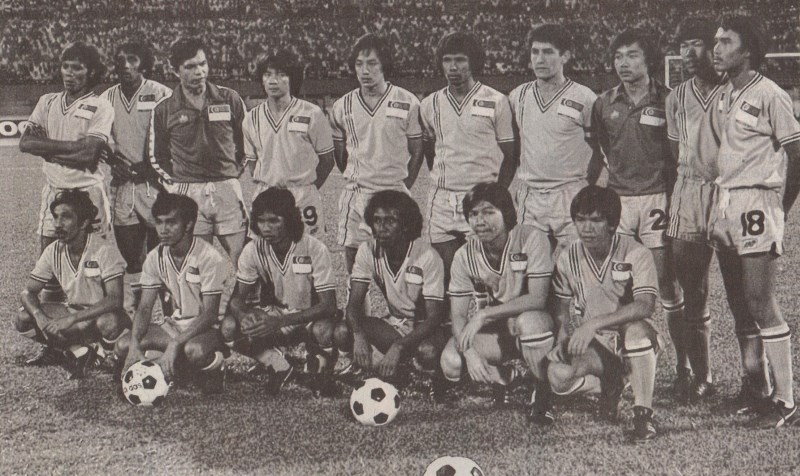
DIGITAL FOOTBALL AGE
I believe the digital age has made Made-in-Singapore football far less appealing to the youth of today. Many would rather follow the football teams from England, Spain, Germany or Italy instead of our local football clubs, which struggle in the 22-year-old S-League.
What else can I do putting pen to paper and say: Wake up, FAS, wake up! Globally, football has flourished into a massive business.
Sadly, it has edismally stagnated in Singapore. It hurts to see how Singapore football has literally gone down the drain at all levels from the Lions, the S-League, the NFL (National Football League) right to the grassroots in the heartlands of Jurong, Bedok, Woodlands and Choa Chu Kang.
The FAS needs a tsunami-like total rethink and it needs football-hearted people who truly have a passion to run the FAS, rather than politically-minded academicians who do this for “the good of the country”.
If countries like Uruguay or Denmark or Iceland can produce World Cup-calibre teams, there is no reason why Singapore cannot do this.
But for God’s sake, definitely not take a 100 backward steps and go the Malaysia Cup-way to play some of the little states across the Causeway! – SURESH NAIR
- Suresh Nair is a Singapore-based journalist who has covered Singapore-Malaysia football for four decades.




















